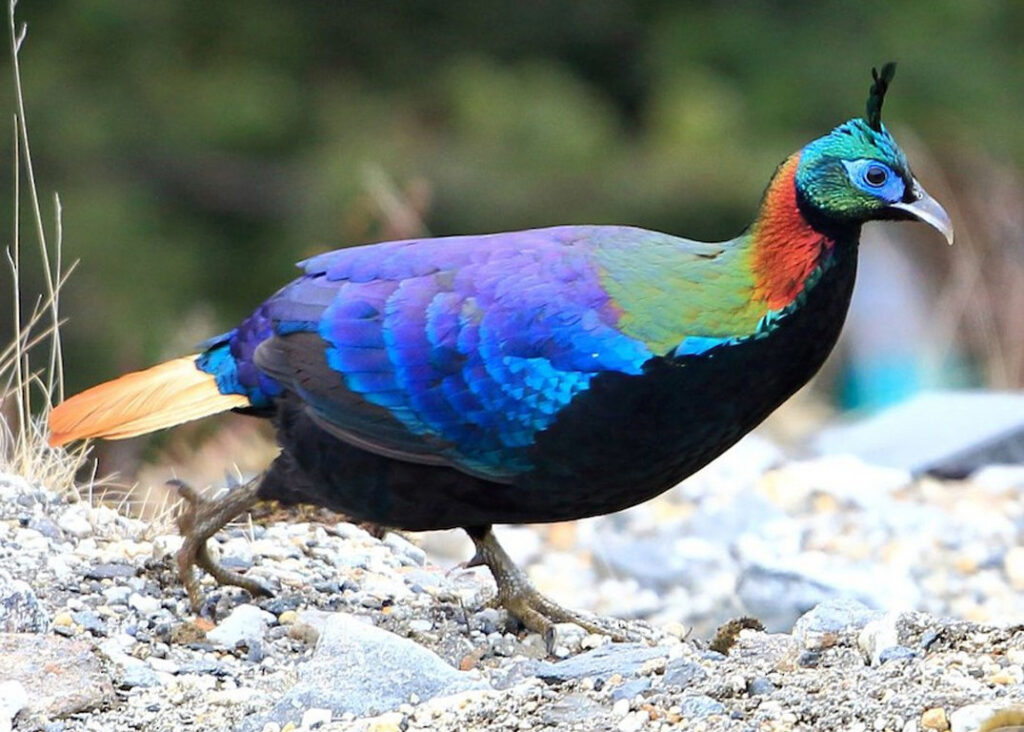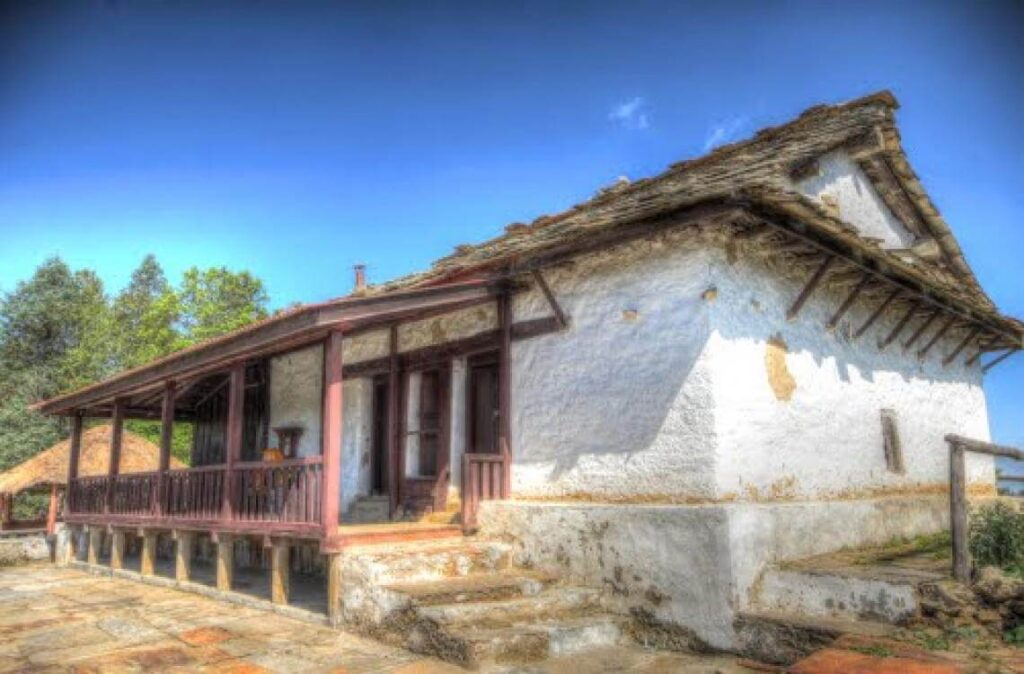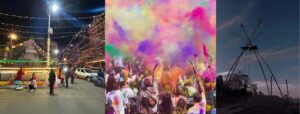Khaptad National Park lies in the far west of Nepal. The 225-square-kilometer park was established in 1984. The buffer zone spans 216 square km in total. This park, which represents a distinctive and significant ecology, is the only mid-mountain national park in western found in Nepal.
The reason behind the naming of this national park according to folks is in the 1940s, the late Khaptad Swami settled in the region for his worship and meditation. He became well-known as a spiritual saint after living as a recluse for almost 50 years.
Unlike any other protected area in Nepal, the park offers a demanding yet rewarding experience. Situated close to the park headquarters is the Khaptad Baba Ashram. On the route to Park Headquarters are the three rivers that form the Tribeni confluence and a Shiva temple.
This place celebrates Ganga Dashahara on Jestha Purnima, and a large number of pilgrims come to the park during the event. Another sacred location is Sahashra Linga, which is the highest peak in the park at 3,200 meters above sea level. Other holy sites are Kedardhunga, Nagdhunga, and Ganesh Temple. It is believed that these spots are peaceful spaces for meditation and shouldn’t be disturbed. These places forbid the use of alcohol, tobacco products, and animal sacrifice.
The park headquarters include a view tower and a small museum. The Saipal Himalayan Ranges are visible to the north, while the vast, verdant Nepalese mid-hills are visible to the south. Within the park, there are 22 open areas where pastureland, or patans, blends in with the trees. During the summer, the residents graze their animals in the Patans. Khaptad Daha Lake lies in the northeastern section of the park. This place celebrates a festival known as Purnima, which takes place between the August–September full moon.
What is Khaptad National Park famous for?
Khaptad Baba Ashram
Khaptad Baba Ashram is famous for its spiritual peace inside Khaptad National Park. The Baba who used to reside there is Khaptad Baba, a renowned philosopher, healer, physicist, and astrologer.
Also Read: Sagarmatha National Park
Flora and Fauna
The park’s vegetation can be categorized into three main zones: subtropical, temperate, and tropical. Lower elevations (1000–2000 m) are dominated by subtropical vegetation; montane sal, pines, and alder species make up the majority of the forest. Temperate type predominates in the region between 1800 and 3000 meters.
There are three types of species found in the forest: temperate mixed evergreens (such as hemlock, oak, and fir), higher temperate broad-leaved species, and lower temperate mixed broad-leaved species like Lindera Nacusua and Cinnamomum Tamca.
The three main species present there are rhododendron, birch, and fir oak. The picturesque Patans (pastureland) with their roughly 135 types of gorgeous flowers that bloom in the summer and late spring are woven throughout the topography of the Khaptad plateau. Primroses, buttercups, and wild berries are among the meadow flowers. Within the park are approximately 224 different types of medicinal herbs.

There are currently 287 bird species recorded in the park, 23 amphibians and reptiles, and 23 mammals on the checklist with migratory birds coexisting with local birds. About 175 species of breeding birds are found in this park. Several common birds can be seen, including the Impeyan, the national bird of Nepal, the pheasant (Dhanphe), and several partridges, flycatchers, bulbuls, cuckoos, and eagles.
The environment of the Khaptad also includes a diverse range of moths, insects, and butterflies. Approximately twenty distinct mammal species have habitats in the area. The Himalayan black bear, goral, barking deer, Rhesus and Langur monkeys, and Himalayan black bears are a few common ones. Among the others are jackals, musk deer, wild dogs, and leopards.
Vegetation
The terrain is made up of waterways, high hills, and moorland. In the protected area, there are 567 known species of plants.
You may also like: Shivapuri National Park
In riverine locations, the vegetation types include Himalayan fir-hemlock-oak forest, alder forest, and chir pine-rhododendron forest.
Cultural and Spiritual Significance
For the people of Nepal, the park is extremely significant both spiritually and culturally. it bears the name of Khaptad Baba, a well-known saint and spiritual guide who lived in the region and became enlightened.
Devotees travel from all over to Khaptad Baba because it is thought that he performed miracles and held deep spiritual understanding.

The Ashram is located in the park; followers and devotees gather here to honor the saint and ask for spiritual direction. Devotees take part in ceremonies, rituals, and cultural celebrations at the annual Khaptad Baba Fair, which takes place in June or July. This is an important religious event.
Things to do
Trekking and outdoor activities
Excellent options for hiking and outdoor activities in a calm and natural setting may be available in Khaptad National Park if the season is in your favor.
The park offers several trekking trails that range in length and complexity, enabling visitors to experience its varied landscapes and breathtaking views.

The trails to Sahashra Linga, Upper Tribeni, Khaptad Danda, and neighboring places are popular trekking destinations.
Trekking within the park offers the opportunity to see expansive views of the mountains, lush woods, alpine meadows, and tranquil lakes.
Bird watching
The Khaptad National Park is home to an enormous variety of birds, as was previously reported. Because of this, this park is the perfect place to go birdwatching.
More: Chitwan National Park
Travelers can begin studying nature and the exquisite species it has created after they reach the peak of the national park.
Getting There
Several routes lead to Khaptad National Park, however, the most straightforward is to fly from Nepalgunj to Dipayal and then take a local bus to Silgadhi, Doti. To get to the Khaptad National Park entrance gate, hike for approximately six hours after arriving at Silgadhi Bazaar.

Travelers arriving by air can land at Nepal’s Dhangadhi Airport and then take a local taxi to Bajhang. To reach the national park, begin your trip from Bajhang.
Estimated Cost
| No of people | Price P.P |
| 2 – 3 | US$ 789 |
| 4 – 6 | US$ 749 |
| 7 – 9 | US$ 719 |
| 10 – 15 | US$ 699 |
Best season to visit the park
The best seasons to visit the park are spring (March–May) and fall (October–November). Trekking is enjoyable throughout the nice temperature range of 10°C to 20°C. The rainy season, which lasts from June through September, causes muddies and slick walkways. Winter brings snow and chilly winds from December to February.
Let our expert team at Asian Heritage Treks and Travel take care of everything — from guided tours to personalized packing tips and travel arrangements.
Plan a fun adventure







